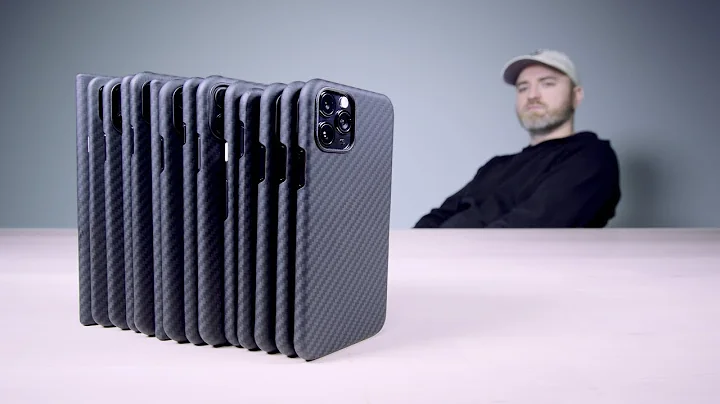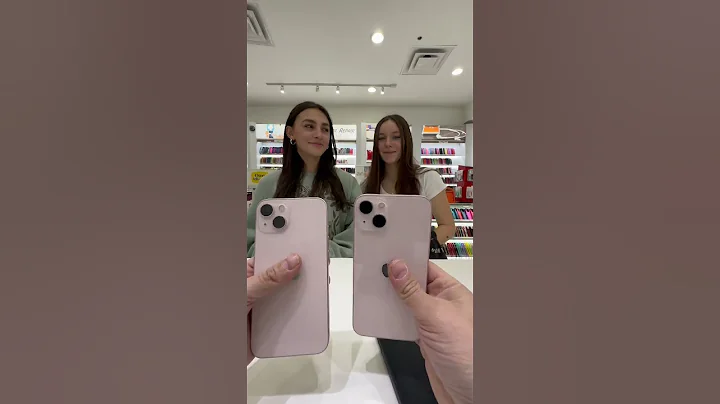

GGV has something to say:
I don’t know since when, we have become accustomed to the lens module protruding from the back of the mobile phone, and no one complains about why the lens protrudes so much from the body.
Without a phone case, some phones can even cause the phone to slide off the table due to the vibration of the message reminder because the lens module protrudes too much.
So, has become so thin from mobile phones to current smartphones. Can’t we make the lens thinner?
Today's GGView, let us find the answer to this question together.
article source: "Global Science" (id: huanqiukexue) written by
| Reviewed by Wang Yu | Erqi
The miniaturization of electronic components has gradually brought us into the information age. We can build on chips smaller than a fingernail. It has a complex structure comparable to that of an entire city, allowing countless currents to move exactly according to the rules set by engineers on the time scale of nanoseconds .
However, in addition to improvements in imaging quality such as light input, phase difference, and chromatic aberration, the lenses we use today are not, in principle, the same as the lens used by Louis Daguerre when he first photographed a person in 1839. There is no essential difference between . For imaging optical systems, there has been no fundamental progress in technology, as if the basic technology has been locked up by sophons.

The first photograph of a person was taken in 1839. Image source: Louis Daguerre/public domain
When a traditional lens is imaging, the entire lens can be equivalent to an convex lens . But a lens cannot be composed of just one convex lens because it has aberrations and chromatic aberrations. Therefore, the lens needs to be composed of multiple lenses, each of which has its own responsibility. Some are responsible for deflecting light, some are responsible for eliminating chromatic aberration, and some are responsible for eliminating distortion. Each lens requires a complex grinding process and requires extremely high precision during assembly. After all, optics is the most sophisticated subject that humans have mastered. The photolithography machine that manufactures chips and the laser interferometer that detects gravitational waves are all optical instruments. Behind the precision is the high cost.
cameras are becoming more and more widely used, and our demand for high-quality images is increasing day by day. Whether it is autonomous driving or drone obstacle avoidance, a large amount of imaging data is required. Even if mobile phone lenses are now smaller in size, they can still rely on mass production on the assembly line to reduce costs. However, due to the limitations of the traditional optical lens principle, it must be realized by multiple lenses, and the thickness and cost of cannot always be reduced to a satisfactory level.

super lens
What we need is not the lens itself, but the image that the lens finally presents on the sensor. If there is any thin, simple structure that can replace traditional lenses, that would be great. Metalens are such optical instruments.
When seeing "meta", what most people think of is the metaverse. But in fact, this term has been used in the field of material science and for a long time. The "metalens" of metalens is also derived from the two concepts of metamaterial (metamaterial) and metasurface (metasurface). The word "Metamaterial" is derived from the Greek "meta", which means "beyond". Metamaterials go beyond the scope of ordinary materials and have properties that ordinary substances do not have. Metamaterial is not so much a substance as it is a special artificial structure made of conventional substances such as metal, silicon and plastic. If this structure as a whole is viewed as a substance, it may have special properties, such as a negative refractive index.

An example of a possible hyperlens pattern collected by the electron microscope . (Image source: Science)
The scale of the microstructure of the metamaterial determines what wavelengths of light it can interact with. If the microstructure is reduced to a scale of tens or hundreds of nanometers, it will be a visible light metamaterial.At the same time, in order to improve the transmittance of light, all microstructures can be placed on a two-dimensional surface, and the metamaterial becomes a metasurface. Each microstructure in it looks like a tiny pillar and functions as a waveguide . A metasurface can change the direction of light propagation. Using it as a lens is a metalens.

An example of a possible hyperlens pattern collected by an electron microscope. (Image source: SCIENCE · 18 Jul 2014 · Vol 345, Issue 6194 · pp. 298-302)
Generally speaking, in order to image, an optical system needs the ability to gather light. Light is a kind of electromagnetic wave . The wave has phase attributes. The plane composed of electromagnetic waves of the same phase is called wave front . The microstructure on the super lens, , can adjust the phase of the incident electromagnetic wave according to its shape and arrangement, thereby controlling the shape of the wave front . As long as the microstructure of the super lens adjusts the shape of the wavefront to a convergent shape, its effect is equivalent to a convex lens and imaging can be achieved.

Convex lenses can focus light by changing the wavefront, and so can the wavefront. Image source: Oleg Alexandrov/wikimedia
Traditional lenses are lenses that require fine grinding, while superlenses are ultra-thin planar structures. A lens with a thickness will produce chromatic aberration due to the different refractive index of the material to light of different colors. However, because the metasurface is ultra-thin, light of all wavelengths passes through the lens almost simultaneously, and no chromatic aberration is produced. It is actually a kind of achromatic aberration. lens. And, what’s more advantageous is that metasurfaces are actually not difficult to produce. The improvement of the ability to manufacture microscopic repetitive structures has been the main driving force behind the progress of electronic technology in the past few decades. In fact, metasurfaces can be mass-produced by existing semiconductor foundries.
Therefore, if the technology of the super lens is mature, we only need to stack the sensor that senses the light, the glass that provides the thickness, and the super lens that bends the light to get a nearly perfect lens for . It can produce images without chromatic aberration, has no complicated lens structure, and is much thinner - and the cost is even lower.

The Curse of Meta
However, the word meta seems to have a curse. Everything related to it seems to have such a bright future, but it seems that it is not close to being implemented in real life. super lens technology has always given people a feeling that is more gimmick than reality. Few people can really give the actual commercial time of super lens technology. However, this phenomenon is changing rapidly.
Last week, Nanjing University Li Tao's team used metalens technology to create an ultra-thin and excellent image quality integrated single-layer super lens array wide-angle camera (single-layer metalens array integrated wide-angle camera ,MIWC). Relevant results were published in the journal Optica. The MIWC camera measures 1 × 1 × 0.3 cm and has a viewing angle of 120°. Compared with previous single super-lens cameras, the super-lens array in the MIWC camera can compensate for the problem of image quality degradation at the edges of different super-lenses and achieve higher imaging quality. At the same time, because the camera only consists of two components: a CMOS light sensor and a super lens array, it is expected to reduce costs in mass production. In the future, the research team plans to increase the diameter of a single super lens in the array from 0.3 mm to 1 to 5 mm to further improve imaging quality.

Comparison of imaging quality between traditional single super lens camera and MIWC camera. Image source: Tao Li, Nanjing University
When taking portrait photos, people often need the shallow depth of field brought by a "large aperture" to blur the background of the photo and highlight the subject. But for data acquisition, the larger the camera's depth of field, the better. Being able to see both distant and near objects clearly at the same time is the most ideal state. Yesterday, Xu Ting's team from Nanjing University published an article in Nature Communications. Inspired by the compound eyes of trilobites, they used super-lens technology to develop a super-large depth-of-field miniature camera with a bifocal lens, which can capture images in a single image. The photo can clearly image objects within 3 centimeters and 1.7 kilometers away at the same time. Relevant research was published in "Nature·Communications" .Schematic diagram of the imaging principle of

bifocal lens (Photo source: Kelley/NIST)
Rome was not built in a day, and the development of super lenses also takes time. Now, the development of metasurfaces is getting faster and faster. Perhaps we can expect that with the help of metasurface technology, we can return to the era when mobile phone lenses were not prominent.
* Reference link:
https://www.eurekalert.org/news-releases/949421
https://www.radiantvisionsystems.com/zh-hans/blog/going-meta-how-metalenses-are-reshaping-future-optics
https ://opg.optica.org/optica/home.cfm
https://www.nature.com/articles/s41467-022-29568-y#auth-Ting-Xu
https://iopscience.iop.org/article/10.1088 /0034-4885/79/7/076401/meta
* This article comes from the WeChat public account "Global Science" (id: huanqiukexue). If you need to reprint, please contact [email protected]
Warm reminder: Although we push it every day, recently Some readers said that due to adjustments to the platform's push rules, they sometimes cannot see our articles ~
* The views in this article are for reference only and do not represent the position of this organization.























